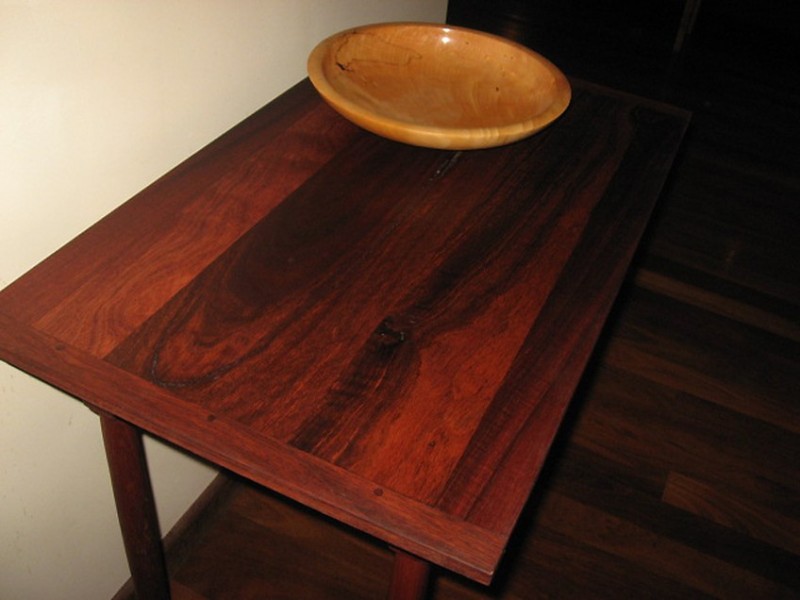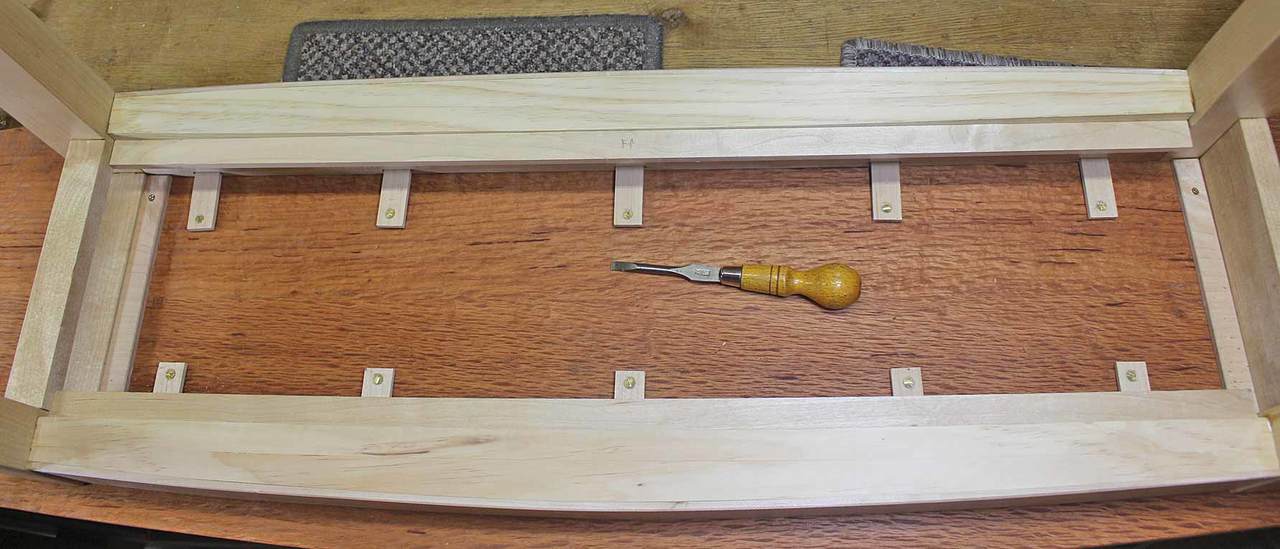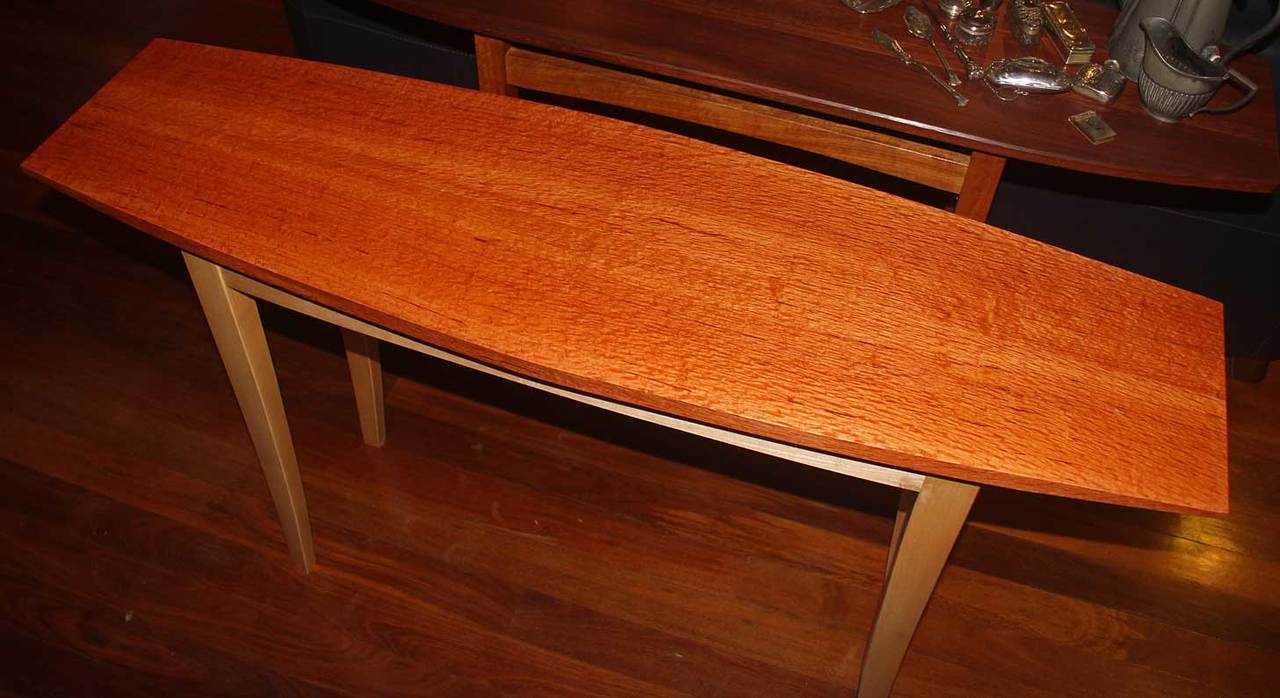 Needs Pictures: 0
Needs Pictures: 0
Results 1 to 15 of 17
-
20th November 2017, 01:29 PM #1
 GOLD MEMBER
GOLD MEMBER











- Join Date
- May 2009
- Location
- melb
- Posts
- 1,125
 how important are breadboard ends on table
how important are breadboard ends on table
Just wondering, how important are breadboard ends on a desk/dining table? I see many woodworkers on youtube etc use it, but many timber suppliers who glue bench/desktops for clients dont do it. I couldnt find a photo online on what could happen without it - only diagram. How often does the boards cup?
Is it less likely to happen with quarter sawn timber?
Is it less likely to happen with narrower boards? (eg 100mm vs 200mm boards)
Is it less likely to happen with really dry timber (eg old/recycled timber)?
edit:
another question, would dowel or tenon/floating tenon help with warping?
-
20th November 2017 01:29 PM # ADSGoogle Adsense Advertisement
- Join Date
- Always
- Location
- Advertising world
- Posts
- Many
-
20th November 2017, 01:47 PM #2
 China
China











- Join Date
- Dec 2005
- Location
- South Australia
- Posts
- 4,474

Many many thousands of tables have been made with out "Breadboard" ends and have survived hundreds of years with no detrimental side effects, if you glue up correctly i.e. alternate the boards etc. you should have no issues
-
20th November 2017, 03:15 PM #3
 Neanderthal Neophyte
Neanderthal Neophyte











- Join Date
- May 2012
- Location
- Melbourne, VIC
- Posts
- 75
-
20th November 2017, 03:48 PM #4
 GOLD MEMBER
GOLD MEMBER











- Join Date
- Oct 2014
- Location
- Caroline Springs, VIC
- Posts
- 1,645

The table frame does a lot to keep the top flat via the aprons and rails. But when you have a significant unsupported overhang at the ends of the top, it is advisable to use breadboard ends here. Boards can cup, twist and warp overnight. It is terrible when a table is positioned near a window that receives the afternoon sun, and that is pretty common because people dislike living in dark dingy hobbit holes nowadays.
-
20th November 2017, 06:19 PM #5
 GOLD MEMBER
GOLD MEMBER











- Join Date
- May 2009
- Location
- melb
- Posts
- 1,125

another question, would dowel or tenon/floating tenon help with warping?
-
20th November 2017, 06:51 PM #6

-
20th November 2017, 08:28 PM #7
 China
China











- Join Date
- Dec 2005
- Location
- South Australia
- Posts
- 4,474

Nothing will prevent warping if your timber is not seasoned
-
20th November 2017, 10:36 PM #8
 GOLD MEMBER
GOLD MEMBER

- Join Date
- Aug 2016
- Location
- Brisbane
- Age
- 57
- Posts
- 1,315

Here in Queensland we look rather fondly on dark dingy hobbit holes, since they are so immensely practical. Yet even here we are not immune from the trends of the civilized world. And thus dark dingy hobbit holes don't grow on trees any more.
Sent from my SM-G935F using TapatalkMy YouTube channel: https://youtu.be/2_KPRN6I9SE
-
20th November 2017, 10:54 PM #9
 GOLD MEMBER
GOLD MEMBER











- Join Date
- Nov 2009
- Location
- Canberra
- Posts
- 1,301

here's one with an overhang.IMG_0003.JPG
-
21st November 2017, 12:50 PM #10
 GOLD MEMBER
GOLD MEMBER











- Join Date
- May 2011
- Location
- Albury
- Posts
- 3,034

Love the proportions of the base of that console table Chrism3, is it one you've made? I've had an idea to make something similar for a fair while now, seeing that might spur me in to action.
-
21st November 2017, 01:57 PM #11
 GOLD MEMBER
GOLD MEMBER











- Join Date
- Nov 2009
- Location
- Canberra
- Posts
- 1,301

Yes, made it about 6 months ago. Plan came from a Taunton book "Tables" by Anthony Guidice, although his overhangs were even longer.
( i sent Taunton a question about an error, but never received a response)
-
21st November 2017, 06:24 PM #12

Cuffy made a good point about support. I used a breadboard end on a Shaker-style table because it was part of the design ...

Buttons on the inside, holding the top down ...

On a recent table, which used two boards for the top, it was sufficient to lock in movement (while allowing for expansion) with the buttons ...


Note: no dowels or biscuits needed to align or reinforce the boards.
Regards from Perth
DerekVisit www.inthewoodshop.com for tutorials on constructing handtools, handtool reviews, and my trials and tribulations with furniture builds.
-
4th January 2018, 08:17 AM #13
 New Member
New Member











- Join Date
- Jul 2009
- Location
- Gatineau Hills West Quebec
- Posts
- 1

I live in Ottawa ON Canada where we get cold dry winters and hot humid summers. I built, 2 years ago, a solid pine trestle table. Therefore no apron, and 16” overhang on the ends. The top is a glued panel of 6” wide, by 1.25” thick kiln dried pine from my land. Overall the top is 38” wide and 60” long. I put breadboard ends on and have noticed a 1/8” expansion on each side in the summer, and it totally contracts in the winter. I built the table in the winter months so its “zero” point is the winter. From this experience, and based on my climate, I will always use breadboard ends.
-
9th January 2018, 08:53 AM #14

Kerfer, wood will always move in response to humidity changes, but it won't necessarily cup or warp. There are many tables in your part of the world, with plenty of overhang & without breadboard ends which have remained flat for decades and even centuries.
Wood is never 'dry' in the sense that it contains no water molecules at all. It reaches an 'equilibrium moisture content' (EMC) which is dependent on prevailing relative humidity. This takes some time, depending on the thickness of the material, & RH is never constant, so unless you live in a climate-controlled building, the wood is always either taking in or giving off some moisture as the seasons roll around. If this is allowed for by design & construction, and your furniture is made from a relatively stable wood (low co-efficient of expansion/contraction for a given change in RH) that has settled to the average EMC for your area/conditions, such movement is usually unnoticed. However, with breadboard ends you will certainly notice even a small amount of annual movement because there is effectively no movement along the grain & the breadboard ends serve as clear datum points.
Whether or not seasonal movement will also manifest as cupping & warping derives from two main causes. The most important is Species. Some woods both move little and/or absorb-release moisture very slowly so that their MC doesn't change quickly. Denser, harder woods tend to pick up & release moisture more slowly, but develop more power when they do want to move. Trying to restrain these with breadboards or screws or whatever usually results in tears before bedtime. Softer woods develop less power, so are easier to restrain, especially when kept to sensible proportions.
The second main cause is that most woods move more radially than tangentially (relative to the growth rings) for a given change in MC. In some cases the radial movement is very much greater, & so you will notice quite obvious dimensional distortion in these woods with seasonal humidity changes. If tangential/radial shrinkage rates are similar, & not high, there won't be much change in either the absolute or relative dimensions of a board, whatever its grain orientation, and you can get away with using wide, unrestrained boards with such woods (like the lovely old re-cycled 600mm wide Hoop-pine planks that I've just been playing with!). But if there is a big difference, and you use wide, plain-sawn boards, cupping is almost inevitable & whether you alternate grain or not, you are going to end up with non-flat surfaces. To get any stability with these species you want to use 'quarter sawn' stock so that shrinkage/expansion occurs symmetrically across the width & depth of the board.
If you choose unstable material, pay no attention to grain orientation and especially if you use heavy sections, your table top is likely to do strange things, breadboard ends notwithstanding. Choosing material that is known to be stable, making sure it is at, or very close to, EMC before you start glueing up, & observing good construction practices generally, are your best insurances against untoward wood movement...

Cheers,IW
-
15th February 2018, 09:10 PM #15
 Senior Member
Senior Member











- Join Date
- Sep 2003
- Location
- Bundoora, Victoria
- Posts
- 105

When you use the breadboard end method, it is essential not to totally glue the breadboard end. The longer boards need to be able to move sideways.
When joining end grain to side grain the boards are fighting each other if totally glued.
If you look at a table with breadboard ends it is not uncommon to see the end does not exactly line up with the table top. There may be a poofteenth difference.
Similar Threads
-
Breadboard ends on fairly thin table top
By Sebastiaan76 in forum WOODWORK - GENERALReplies: 9Last Post: 11th January 2015, 08:42 PM -
Max width for a supported breadboard ends to a Table top
By thumbsucker in forum WOODWORK - GENERALReplies: 6Last Post: 27th September 2009, 08:05 PM -
Breadboard ends technique
By munruben in forum WOODWORK - GENERALReplies: 17Last Post: 18th July 2007, 09:41 PM -
Breadboard ends
By EMistral in forum WOODWORK - GENERALReplies: 12Last Post: 25th April 2006, 08:00 PM -
Breadboard Ends
By Baz in forum WOODWORK - GENERALReplies: 19Last Post: 2nd December 2005, 07:22 PM



 Thanks:
Thanks:  Likes:
Likes:  Picture(s) thanks:
Picture(s) thanks: 
 Reply With Quote
Reply With Quote
